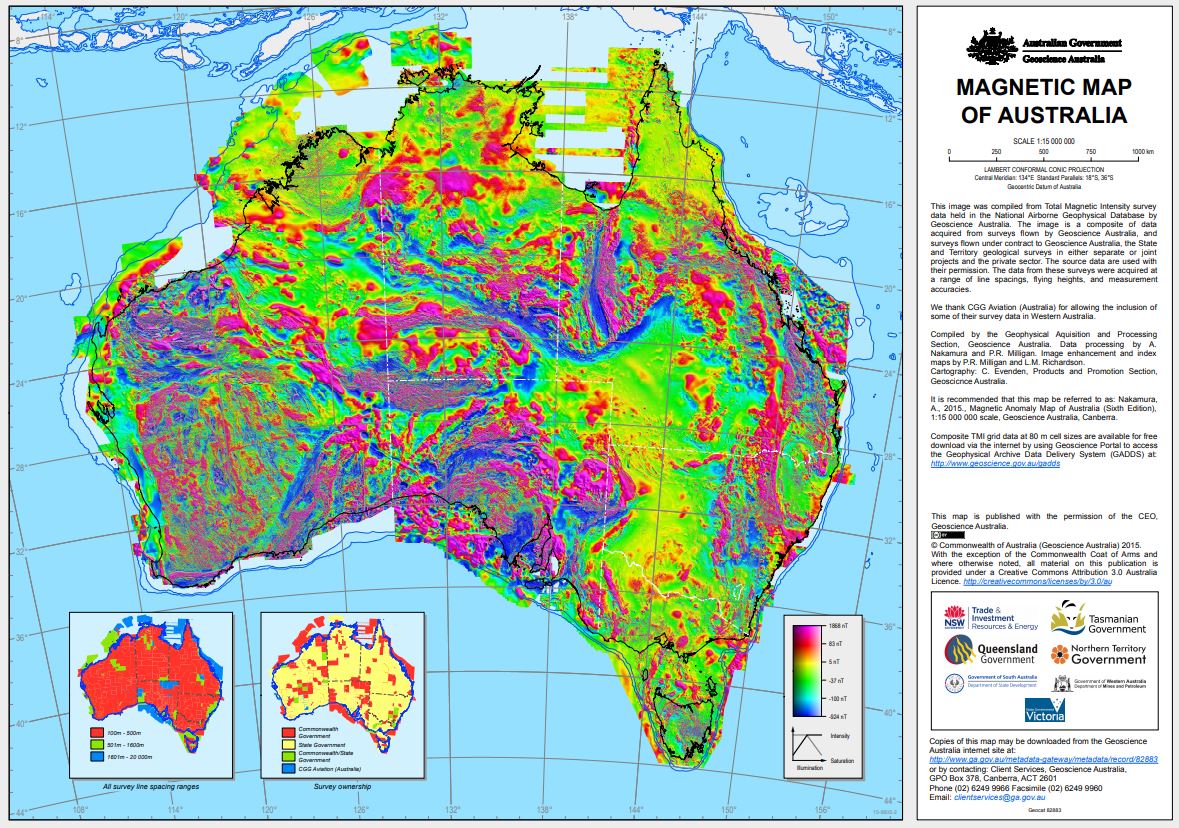Geophysical National Coverage
Type of resources
Keywords
Publication year
Topics
-
This image is a greyscale image of the Total Magnetic Intensity of Australia. Total magnetic intensity (TMI) data measures variations in the intensity of the Earth magnetic filed caused by the contrasting content of rock-forming minerals in the Earth crust. Magnetic anomalies can be either positive (field stronger than normal) or negative (field weaker) depending on the susceptibility of the rock. The image is created from the 2019 TMI grid with a grid cell size of ~3 seconds of arc (approximately 80 m). This image only includes airborne-derived TMI data for onshore and near-offshore continental areas. The image shows the magnetic response of subsurface features with contrasting magnetic susceptibilities. The image can also be used to locate structural features such as dykes.
-
Total Magnetic Intensity colour composite image 2015 The image was created from the Total Magnetic Intensity Grid 2015 - sixth edition. This image has a cell size of ~3 seconds of arc (approximately 80 m) and has been image enhanced for optimal display in Hue-Saturation-Intensity (HSI). This image only includes airborne-derived TMI data for onshore and near-offshore continental areas. Since the fifth edition was released in 2010 data from 41 new surveys have been added to the database, acquired mainly by the State and Territory Geological Surveys. It is estimated that 31 500 000 line-kilometres of survey data were acquired to produce the grid data, 4 500 000 line-kilometres more than for the previous edition.

